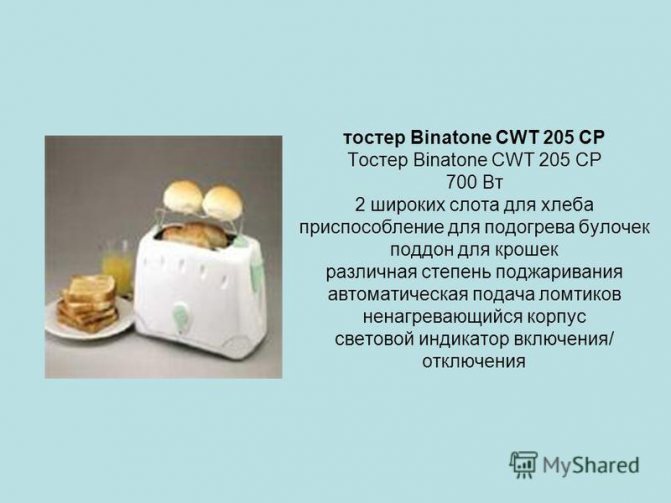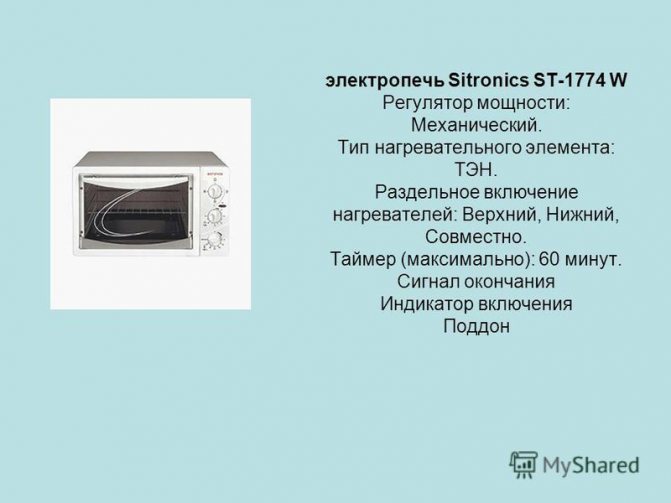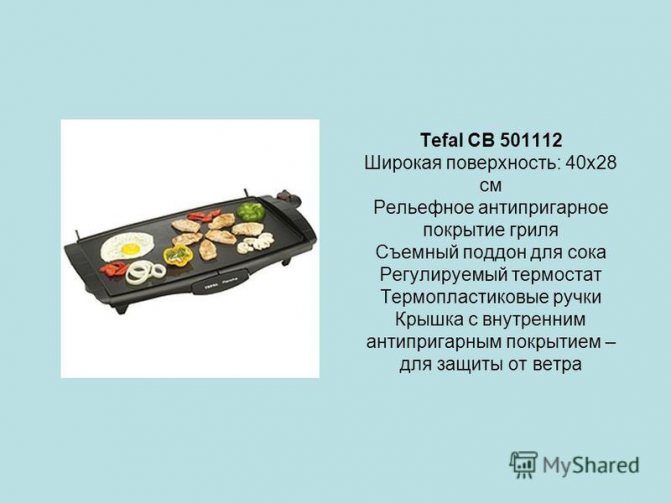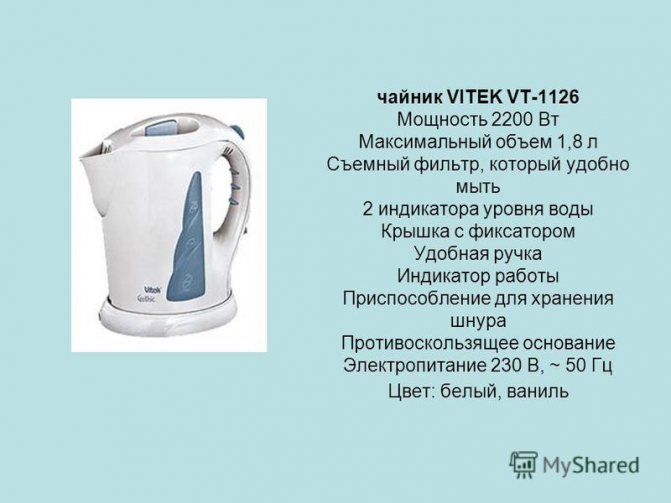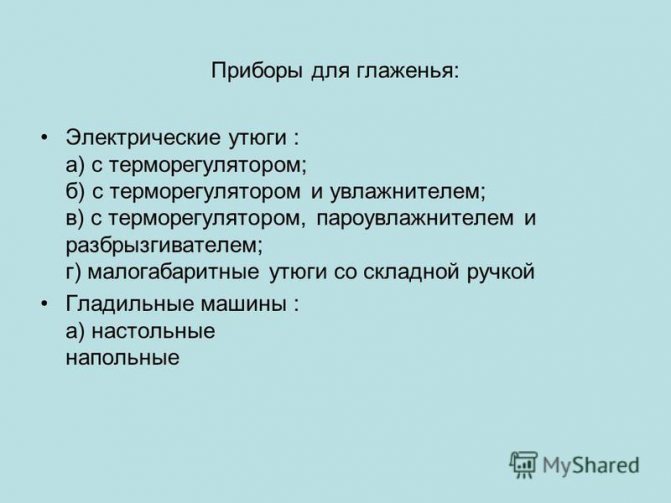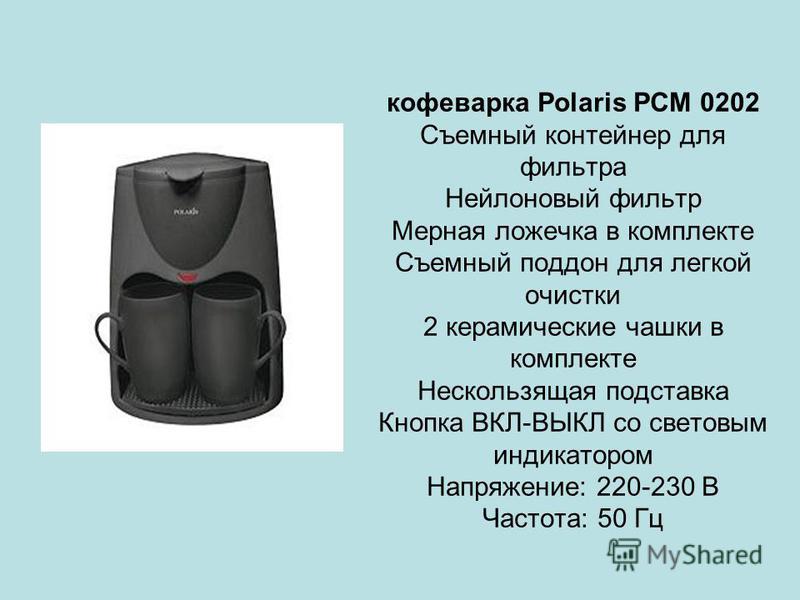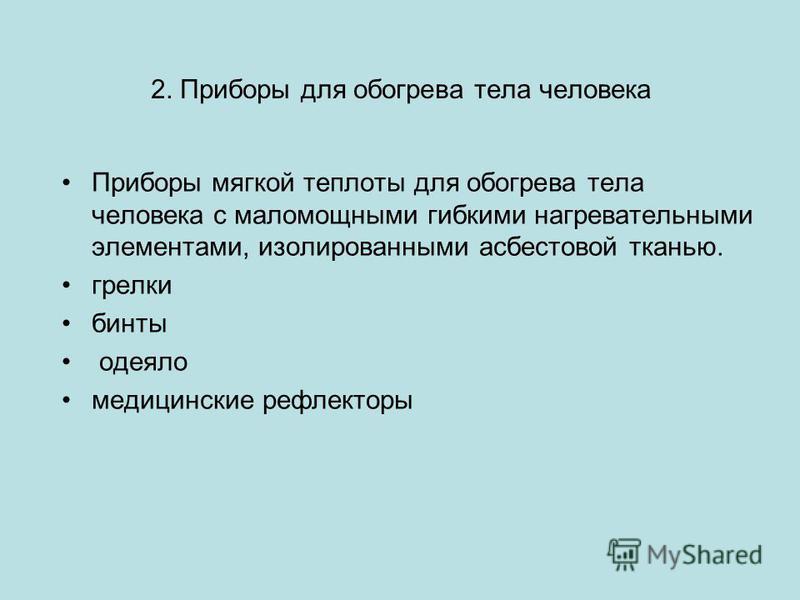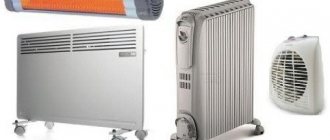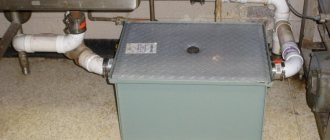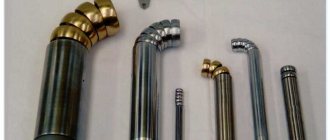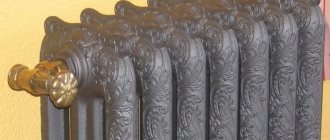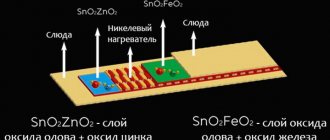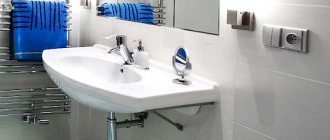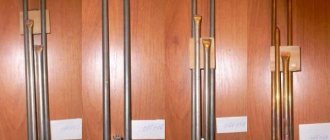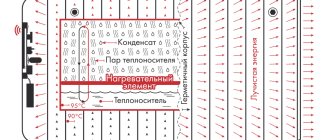The principle of operation of an incandescent lamp
The first and most famous application of thermal action is the glow of a lamp, heating the conductor to white heat.
Incandescent lamps, which are widespread today, are designed quite simply (Fig. 1).
Fig. 1. Incandescent lamp
The main part of the lamp is the filament, which is made of tungsten (or an alloy that includes tungsten). Tungsten is used because it is a very refractory material, the melting point of tungsten is more than 30,000C. Tungsten filament, when heated, glows brightly and creates intense light radiation.
In addition to the filament, the lamp has lead contacts.
A tungsten filament, if heated in air, will burn out quickly enough. This is because it oxidizes and breaks down when heated. Therefore, in an incandescent lamp, a tungsten filament is placed inside a glass bulb, from which air is removed. The ends of the tungsten filament are connected to the contacts. Two contacts connect to two important points of the lamp - one contact connects to the spiral, which is screwed into the socket, the second contact connects to one of the contacts at the bottom of the base. This ensures the flow of electric current.
When an electric current flows, the filament of an incandescent lamp can heat up to, which provides a sufficiently bright glow.
There are various lamps: some burn brightly, give a lot of light, others - quite dim. It depends on which coil is used. If the coil is thinner, the lamp will burn brighter. If the spiral is thicker, respectively, its resistance is different, this lamp will burn dimmer.
Other heating devices
In addition to incandescent lamps, there are other heating devices. These are various heaters, carpets, electric stoves. On heating, that is, on the Joule-Lenz law, devices such as boilers, irons, hair dryers, etc. are based.
All of these devices use the same principle: heating the conductor when an electric current flows. All heating devices use a heating element, which is presented either in the form of a tape or a sufficiently powerful wire (Fig. 2).
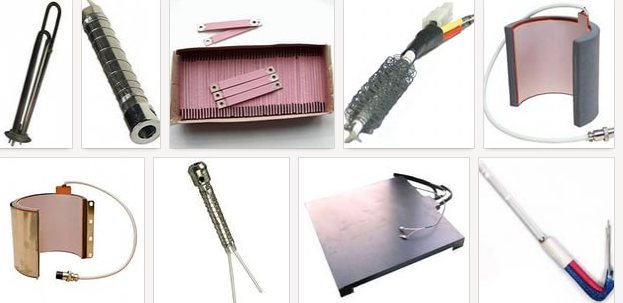
Fig. 2. Various heating elements
Electrical appliances use heating elements of various shapes and configurations. In irons, this can be one heating element, and in an electric stove, another. All heating devices have the goal of creating a comfortable and large amount of heat that can be used.
Electric heating devices.
Electric heating device- a device in which the energy of an electric current is converted into heat energy.
Classification of electrical heating appliances.
By type of regulation heating devices are divided into four groups: without regulation; with heating temperature control; with power regulation; automatic with program control.
Household electric heaters by appointment can be subdivided into the following groups: devices for cooking and heating food, ironing devices, heating devices, devices for heating water, heating tools, drying devices and devices for heating the human body.
Cooking and warming devices
subdivided into subgroups: for cooking and heating food for general purposes, for frying, stewing and baking, for cooking and preparing drinks.
Appliances for cooking and heating food for general purposes include outdoor electric stoves, portable stoves, microwave ovens, food warmers, baby food warmers.
Frying, stewing and baking devices.
The assortment of products of this subgroup includes grills, roasters, toasters.
Appliances for cooking and preparing drinks.
This subgroup of devices includes coffee makers, coffee pots, samovars, kettles, etc.
Ironing devices
... Ironing of textiles is based on the ability of threads and fibers to receive highly elastic deformations under the influence of heat, moisture and pressure. Ironing devices include electric irons and ironing machines.
Electric irons. The industry produces the following types of irons:
- UT with a thermostat and a steel or aluminum sole;
- USP with thermostat and fabric steam humidifier, aluminum sole;
Irons with a thermostat - when ironing fabrics, the soles are maintained at optimal temperatures. Such irons, during normal operation of the thermostat, are fire safe, since the maximum temperature on the sole does not exceed 260 ° C. To ensure rapid heating, high-power heaters are installed in them.
UTPR iron with thermostat, steam humidifier and sprinkler.
Quality requirements: Compliance with GOST, safety in operation, must have a passport and operation manual. Stacked in boxes.
Consumer goods are designed to perform a wide range of functions, to help simplify the processes performed, to reduce time and physical effort, and to improve living conditions.
Refrigerators.
Household electrical appliances for refrigerated and frozen food storage include refrigerators and freezers. Domestic refrigerators are designed for storing fresh and frozen food and preparing small amounts of edible ice.
Refrigerators used for freezing food and their long-term storage are called freezers.
Refrigerator classification:
By appointment: refrigerators, freezers, refrigerator-freezers.
By installation method: floor-standing cabinet type, floor-standing table type, built-in.
By the number of chambers: 1, 2 and 3 chambers.
According to the degree of comfort: ordinary and superior.
By the method of defrosting the evaporator: refrigerators with a natural evaporator tap, semi-automatic and automatic.
By temperature : low-temperature compartment (NTO) not higher than -6˚C, food can be stored for no more than a week; with a temperature not exceeding 12˚С, frozen foods can be stored from two weeks to a month; with a temperature not exceeding 18˚С, from 3 months of storage to a year; freezer.
According to the method of obtaining cold, refrigerators are divided into compression, absorption, thermoelectric.
1) Compression refrigerators In a compression refrigerator the refrigerant is: a) freon 12 ("Sviyaga") freezer temperature -6˚C;
b) freon-701, the temperature is -12 -18˚С in the freezer.
2) Absorption refrigerators- the refrigerant is ammonia, which is heated by electric current or gas.
Absorption refrigerators simple in design, quiet, but have disadvantages: small volumes of food storage, high energy consumption.
The capacity is 80 - 300 dm3.
3) Thermoelectric refrigerators - there is no refrigerant. Its role is played by electric current. They are more secure. Heat is removed and removed to the outside by a thermopile. The refrigerator does not freeze, it cools. The temperature is from +3 to + 8c.
The range of Russian-made refrigerators includes such measurements as "Chaika", "Voronezh". "Tiny", etc.
Quality requirements.
Refrigerators in terms of technical and operational indicators must comply with the requirements of the standard. Domestic refrigerators must provide the required temperature in the refrigerator compartment and low-temperature compartment. The noise level should not exceed 45 dB at a distance of 1 m from the case. Refrigerators should be stored packed in closed rooms with natural ventilation at a relative humidity of no higher than 80%.
Refrigerators are transported in the working position (vertically), securely fastened in order to exclude possible shocks and movements inside the vehicle.
They have a warranty period of 2-3 years.
Service life is 10 years.
The principle of operation of the refrigerator on vortex coolers:
Cooling is carried out by expanding the air pre-compressed by the compressor in blocks of special vortex coolers. It did not become widespread due to the high noise level, the need to supply compressed (up to 10-20 atm) air and its very high flow rate, low efficiency. Advantages - safety (since electricity is not used and there are no moving mechanical parts or dangerous chemical compounds in the structure) durability, reliability
A vacuum cleaner - device for cleaning dust and dirt from surfaces due to suction by air flow. Dust and dirt accumulate in the dust container, from which they must be removed regularly. The first vacuum cleaners were manufactured in the USA in 1869.
Vacuum cleaners can be divided by purpose into household and industrial. For mobility - portable and stationary.
Vacuum cleaner device:
• Vacuum pump. Almost always driven by a collector motor;
• Air purifier that separates dust from the air and collects it in a bag;
• A set of interchangeable brushes for effective removal of dirt from various surfaces (carpets, parquet, furniture, etc.)
• Also, the vacuum cleaner can be equipped with a hose (except for small-sized hand-held models and some vacuum cleaners of the "American" layout with a pump built into the brush), a pipe, as well as nozzles that expand its functionality (spray nozzles, nozzles for inflating inflatable balls, etc. ).
• Vacuum cleaners produce floor, hand, knapsack, brush-vacuum cleaners, centralized and automatic (robotic).
• There are two main categories of bags: By purpose:
• Household vacuum cleaner is the main class of vacuum cleaners for home use.
• Construction vacuum cleaner - for cleaning dust and small construction waste
Non-replaceable cloth bags - are constantly inside the vacuum cleaner and shaken out as they fill, after which they are installed back into the vacuum cleaner. Non-replaceable bags are made of fabric and retain only coarse dust, letting in and spraying a dangerous fine fraction of dust in the air after cleaning.
Replacement bags - made of paper or composite non-woven material and discarded when filled, after which a new bag is inserted into the vacuum cleaner. The best models of nonwoven bags are capable of retaining dust down to 0.3 microns and reach the filtration class HEPA14.
For people with asthma, we recommend vacuum cleaners with a filtration class of HEPA H12 or higher (for example, HEPA H13).
Vacuum cleaner with water filter:
In vacuum cleaners of this type, air is purified by spraying it in a container with water. Three types of such vacuum cleaners are common: bubbling, separator and using partitions / Aqua.
All types of vacuum cleaners have difficulties with fine dust from materials that do not mix or are difficult to mix with water, such as wood and concrete dust. Therefore, sometimes an additional HEPA filter is installed.
All types of vacuum cleaners must be emptied and washed after use and stored in a ventilated state to prevent mold and moisture damage.
Vacuum cleaner brush:
Vacuum cleaners are more common in the United States. In such a vacuum cleaner, the motor and pump are most often located inside the brush. The pump drives air with dust particles into a bag attached to the handle of the vacuum cleaner. The advantages of such a vacuum cleaner include low energy consumption due to the location of the pump as close as possible to the brush, as well as the large volume of the bag. The disadvantages include the difficulty of cleaning hard-to-reach places (for which such vacuum cleaners are equipped with additional hoses and nozzles) and the vulnerability of moving parts from the ingress of water and large objects.
Washing machines
Washing machines are usually classified according to a number of characteristics, the main of which is the type of functions performed and the degree of their automation. On this basis, the following types are distinguished for washing machines:
• SM - washing machines without spinning the linen (their functions are not automated, these are simple small-sized washing machines);
• СМР - washing machines with manual spinning of linen (spinning is carried out using a system of rubberized rollers);
• SMP - semi-automatic washing machines;
• SMA - automatic washing machines;
• SSM - washing machines with clothes drying (this type of washing machines is being developed on the basis of SM washing machines);
• SMAS - washing machines with drying machines.
By the number of tanks, one-tank and two-tank are distinguished.
According to the method of activation of the washing solution, washing machines are divided into: activator and drum.
If possible, water heating distinguishes between washing machines without water heating; with partial water heating; with full water heating.
There are cars of ordinary and superior comfort.
In addition to the listed features, washing machines are also divided by brands and models, manufacturers, countries of origin.
Constant heating temperature of electrical appliances
Why does the heating temperature remain constant in all heaters?
Heating of a conductor is related to electrical resistance. And the electrical resistance of the conductor depends on the temperature. The lower the conductor temperature, the lower the conductor resistance. If a conductor heats up, its resistance increases. The change in electrical resistance during heating leads to the fact that the same power is maintained all the time, which is released during heating in the conductor.
Heating elements are of particular importance today. In the near future, we can expect the appearance of heated sidewalks, heated streets, and not just the use of heating devices in the premises.
Classification of electric heaters by protection class
All modern electrical appliances are divided into separate groups according to protection classes. There are only five classes of human protection when working with electrical devices:
- zero class - electric heating devices with working insulation, no additional protective equipment is provided;
- zero first class - devices with working insulation and connecting non-current-carrying metal parts to the ground loop;
- first class - the presence of an additional protective connection with the conductive elements of electric heating devices, due to which, if the working insulation is damaged, the conductive parts of the device are not energized;
- second class - there is no additional protective connection, but there is double insulation, and the device body is made of non-conductive materials;
- the third class - electrical devices with low-voltage power supply, among modern electric heating devices there is no equipment that can be attributed to this safety class.

